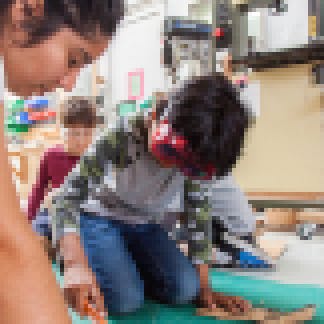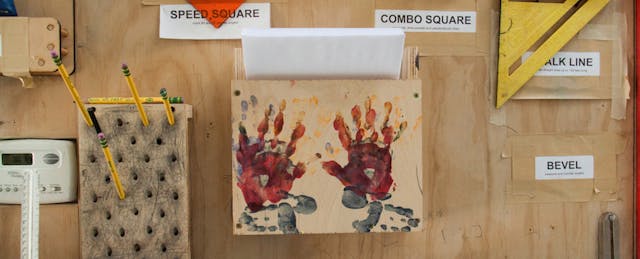One student is testing the wings of his foam core model plane. Three others are extracting oil from lavender. Five are constructing a chart of housing prices in San Francisco. It is a typical day at the Brightworks School in San Francisco, and the students all making something.
Housed in a converted warehouse, Brightworks' pedagogy consists almost entirely of project-based learning. Students learn in "arcs" of investigation into a single topic, and the largest piece of each arc is a project that articulates and challenges the students' understanding of various concepts. Think of a Montessori school with power tools.
Kids have always been creators, but the sort of structured making at Brightworks heralds new intention in the idea of allowing natural curiosity to guide instruction. The Maker Movement's influence is palpable in everything, from the classrooms constructed from plywood to the metallic cardboard chandeliers. To investigate what being a student maker looks like, we paid Brightworks a visit.
Click on any photo to see a larger version. All photos by Blake Montgomery.
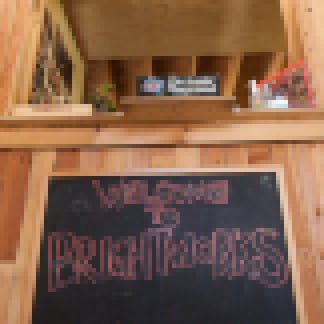

Throughout Brightworks, the childish mixes with the industrial: picture books and power drills, finger paint and circuit boards, foam core and Legos. Several younger students were wearing both animal sweatshirts and lab goggles as they used power saws to cut wood.



In a school with open work areas, projects become collaborative even without intention. During our visit, an older student—Brightworks currently houses middle and lower school-age students—was painting dozens of circles onto foam floor pads. A younger student walked by the table and asked what she was doing and why. She explained and, after she finished, thanked the younger student for helping her clarify her objectives.

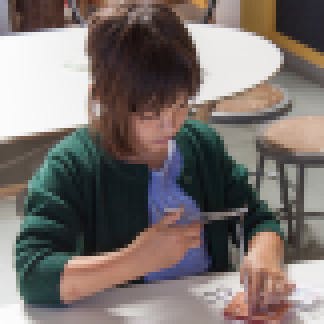
The discipline is likewise collaborative. In a one-room schoolhouse full of hazardous materials, the teachers ask the older students to model project protocols for the younger students. The teachers describe their system as another way to teach responsibility, and they say it dovetails with what the students learn about following rules for their own safety.
Helping one another even informs students' creations. During our visit, a student was prototyping one-legged, unstable stools as toys for fidgeting younger students. She wanted to know if the focus required to keep the stool in place would be a productive way for them to direct their energy. She was close to finishing her first set of stools.
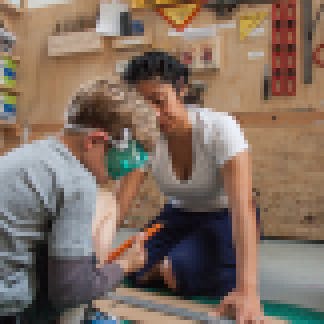
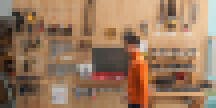
Everything is everywhere—multiple walls of tools, drawers full of craft supplies, just-potted plants, circuit boards, foam core pieces, piles of paper, toys, laptops, books—but everyone seems to know where each necessary piece of a projects is.
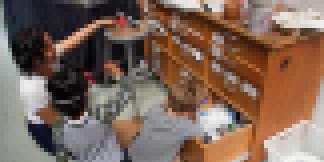

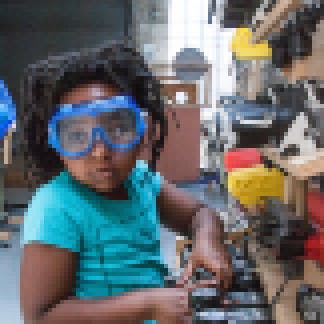

Teachers, mostly young, were walking through the school helping students with their projects. Some were guiding particular groups. When the students had questions, they answered, but it was rare to see a teacher explaining something to a student for more than five minutes. They acted more as informed workshop assistants than lecturers.
